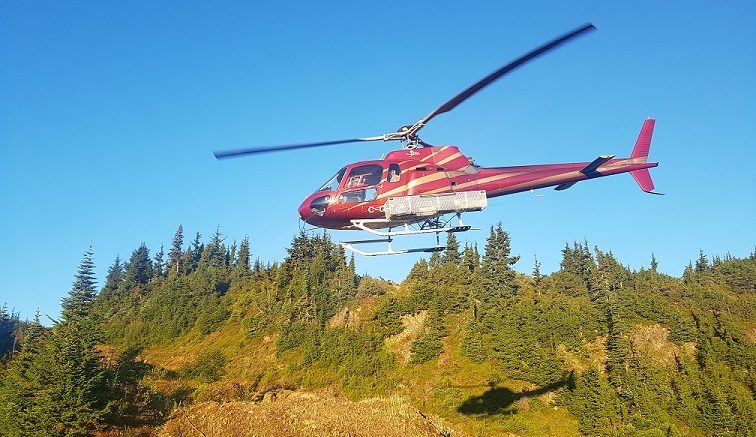A new shallow-depth gold discovery at Skeena Resources’ (TSX: SKE; NYSE: SKE) Eskay Creek project means the open-pit concept could be expanded and offer greater returns than initially thought, the company and analysts said.
Drilling at the project in northwestern British Columbia’s Golden Triangle area found rhyolite-hosted mineralization about 200 metres east of the site’s 22 Zone at a vertical depth of just 23 metres, the company said in a news release on Tuesday.
Hole SK-22-1054 intersected 40.67 metres grading 1.79 grams gold and 32 grams silver per tonne or 2.15 grams gold equivalent per tonne, Skeena said.
Andrew Mikitchook, an analyst based in Toronto for BMO Capital Markets, said the discovery reinforces the potential for additional resources to be defined between the main and south pits.
“The results suggest potential for an expanded pit that could capture additional mineralization early in the mine life, adding to the economics of the project,” Mikitchook said in a note on Tuesday.
Last week Skeena extended the 21A West zone with an intercept of 17.2 metres grading 7.91 grams gold per tonne within the planned pit shell and only 14 metres below surface.
“Between this new discovery and other recent discoveries or extensions to existing zones, there remains significant exploration leverage at Eskay Creek,” Mikitchook said.
The company noted how the area east of the 22 Zone wasn’t drilled by previous owners because mining the rhyolite required higher metals prices than there were at the time for any project to be worthwhile.
In September, Skeena released a feasibility study showing proven and probable reserves of 3.85 million oz. grading 4 grams gold-equivalent per tonne. The company envisions an open-pit operation with an after-tax net present value at a 5% discount rate of $1.4 billion, a post-tax internal rate of return of 50%, and a one-year payback at metal prices of US$1,700 per oz. gold and US$19 per oz. silver.
“Eskay Creek is the premier undeveloped open-pit precious metals project in Canada,” Craig Stanley, an analyst based in Toronto for Raymond James, said in a note on Tuesday.
Pre-output capital costs are forecast at $592 million, according to the study. Average annual production for the first five years of the mine’s nine-year life is projected at 431,000 gold equivalent oz. at an all-in sustaining cost of US$652 per ounce.
The company plans to follow-up the results released on Tuesday in next year’s drilling and to update its feasibility study with a new resource estimate, Skeena said.
“This new discovery suggests that significant exploration potential still exists in areas proximal to synvolcanic feeder structures where there has been very limited historical drill testing,” Skeena president and chief executive officer Randy Reichert said in Tuesday’s release.
Exploration of the volcanogenic massive sulphide deposit at Eskay dates to 1932. A discovery in 1988 led to the underground development of the 21B zone in 1990, with production at the Eskay Creek mine starting in 1994. It produced about 3.3 million oz. gold and 160 million oz. of silver over a 14-year life.
“Exploration drilling by Skeena in areas deemed non-prospective by previous operators continues to identify zones of mineralization with potential to add new, near-surface mineralization,” Adrian Newton, Skeena’s director of exploration, said in the same release. “That could be incorporated into the near-term development plans for Eskay Creek.”


Be the first to comment on "Skeena discovers shallow Eskay project gold that may expand pit and lower costs"